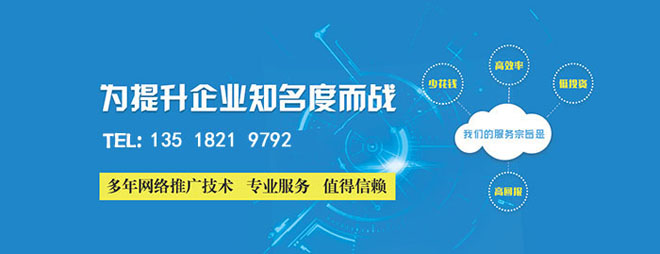Android数据库工作方式解析
在手机系统领域中,谷歌的Android操作系统算是一个新起之秀。但是其优秀的性能以及开源性,使其一经推出就伸手广大用户的好评。在这里我们可以从Android数据库的相关操作来体验这一系统给我们带来的好处。#t#

一个好的习惯是创建一个辅助类来简化你的数据库交互。
考虑创建一个数据库适配器,来添加一个与数据库交互的包装层。它应该提供直观的、强类型的方法,如添加、删除和更新项目。数据库适配器还应该处理查询和对创建、打开和关闭数据库的包装。
它还常用静态的Android数据库常量来定义表的名字、列的名字和列的索引。
下面的代码片段显示了一个标准数据库适配器类的框架。它包括一个SQLiteOpenHelper类的扩展类,用于简化打开、创建和更新Android数据库。
- import android.content.Context;
- import android.database.*;
- import android.database.sqlite.*;
- import android.database.sqlite.SQLiteDatabase.CursorFactory;
- import android.util.Log;
- public class MyDBAdapter
- {
- private static final String DATABASE_NAME = “myDatabase.db”;
- private static final String DATABASE_TABLE = “mainTable”;
- private static final int DATABASE_VERSION = 1;
- // The index (key) column name for use in where clauses.
- public static final String KEY_ID=”_id”;
- // The name and column index of each column in your database.
- public static final String KEY_NAME=”name”;
- public static final int NAME_COLUMN = 1;
- // TODO: Create public field for each column in your table.
- // SQL Statement to create a new database.
- private static final String DATABASE_CREATE = “create table “ +
- DATABASE_TABLE + “ (“ + KEY_ID + “ integer primary key autoincrement, “ +
- KEY_NAME + “ text not null);”;
- // Variable to hold the database instance
- private SQLiteDatabase db;
- // Context of the application using the database.
- private final Context context;
- // Database open/upgrade helpe
- private myDbHelper dbHelper;
- public MyDBAdapter(Context _context) {
- context = _context;
- dbHelper = new myDbHelper(context, DATABASE_NAME, null, DATABASE_VERSION);
- }
- public MyDBAdapter open() throws SQLException {
- db = dbHelper.getWritableDatabase();
- return this;
- }
- public void close() {
- db.close();
- }
- public long insertEntry(MyObject _myObject) {
- ContentValues contentValues = new ContentValues();
- // TODO fill in ContentValues to represent the new row
- return db.insert(DATABASE_TABLE, null, contentValues);
- }
- public boolean removeEntry(long _rowIndex) {
- return db.delete(DATABASE_TABLE, KEY_ID + “=” + _rowIndex, null) > 0;
- }
- public Cursor getAllEntries () {
- return db.query(DATABASE_TABLE, new String[] {KEY_ID, KEY_NAME},
- null, null, null, null, null);
- }
- public MyObject getEntry(long _rowIndex) {
- MyObject objectInstance = new MyObject();
- // TODO Return a cursor to a row from the database and
- // use the values to populate an instance of MyObject
- return objectInstance;
- }
- public int updateEntry(long _rowIndex, MyObject _myObject) {
- String where = KEY_ID + “=” + _rowIndex;
- ContentValues contentValues = new ContentValues();
- // TODO fill in the ContentValue based on the new object
- return db.update(DATABASE_TABLE, contentValues, where, null);
- }
- private static class myDbHelper extends SQLiteOpenHelper
- {
- public myDbHelper(Context context, String name, CursorFactory factory,
int version) {- super(context, name, factory, version);
- }
- // Called when no database exists in
- // disk and the helper class needs
- // to create a new one.
- @Override
- public void onCreate(SQLiteDatabase _db) {
- _db.execSQL(DATABASE_CREATE);
- }
- // Called when there is a database version mismatch meaning that
- // the version of the database on disk needs to be upgraded to
- // the current version.
- @Override
- public void onUpgrade(SQLiteDatabase _db, int _oldVersion,
int _newVersion) {- // Log the version upgrade.
- Log.w(“TaskDBAdapter”, “Upgrading from version “ +
- _oldVersion + “ to “ + _newVersion +
- “, which will destroy all old data”);
- // Upgrade the existing database to conform to the new version.
- // Multiple previous versions can be handled by comparing
- // _oldVersion and _newVersion values.
- // The simplest case is to drop the old table and create a
- // new one.
- _db.execSQL(“DROP TABLE IF EXISTS “ + DATABASE_TABLE);
- // Create a new one.
- onCreate(_db);
- }
- }
- }
Android数据库的相关操作就为大家介绍到这里。
新闻名称:Android数据库工作方式解析
文章转载:http://www.csdahua.cn/qtweb/news30/416480.html
网站建设、网络推广公司-快上网,是专注品牌与效果的网站制作,网络营销seo公司;服务项目有等
声明:本网站发布的内容(图片、视频和文字)以用户投稿、用户转载内容为主,如果涉及侵权请尽快告知,我们将会在第一时间删除。文章观点不代表本网站立场,如需处理请联系客服。电话:028-86922220;邮箱:631063699@qq.com。内容未经允许不得转载,或转载时需注明来源: 快上网
- 正在准备windows时间很长了怎么办?(启动正在准备windows卡住了)
- 秀米如何设置艺术字体?(秀米怎么编辑)
- 租用英国服务器如何选择IDC公司?
- 简易数据库语句教程,快速掌握数据操作技巧(数据库或语句)
- 使用Linux系统FTP服务的简单指南(linuxftp怎么用)
- 数据库字段变化:数据更新、整合与重新调整!(数据库字段变化)
- 您的物联网安全性是否足够强大?
- 无线鼠标怎么重新配对
- Eclipse插件快速开发
- c++mfc文件的读写?(cfile 写入文件,CFile判断文件是否打开)
- DEFCON23:专门抓捕黑客的人
- 阿里云网盘与相册在哪里续费呢?
- 深入了解Kubernetes:它是用什么语言开发的?主要作用介绍
- 玩转KMS8.0的反盗窃功能
- SQL数据库故障?维修需要这些技巧!(sql数据库维修)


